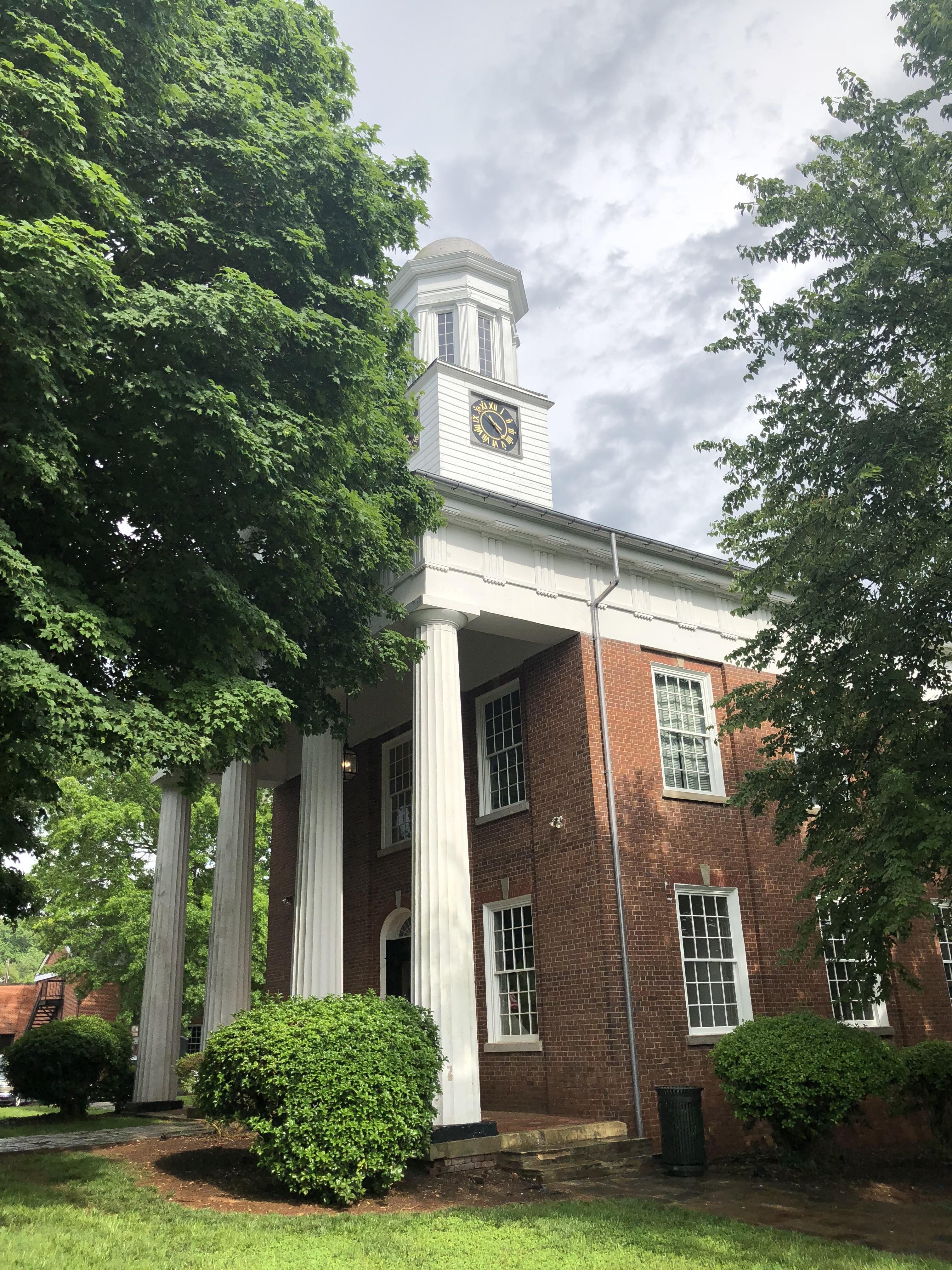Hillsborough, NC – A Travel Blog
Title image: Old Orange County Courthouse c. 1844, Hillsborough, NC.
Over Memorial Day weekend I was invited to a garden party in Hillsborough, NC. Before showing up at the party I decided to do a walking tour of the main part of town. My idea was that you don’t have to go half-way around the world to find a place that’s worth a trip. This one is less than 20 minutes from Durham.
Hillsborough, NC: Past and Present
Hillsborough is a colonial town. An important part of North Carolina history involves the Regulators, the large group of colonists who opposed the taxation and fee system imposed by the colonial officials in the late 1760s. This political argument led to the battle between the colonial militia and the Regulators in 1771.
The Regulators were a few years (namely, five) ahead of their time. This sign tells the end of their story :

This sign is next to the Old Orange County Courthouse on Churton Street, the main drag.
Hillsborough is also necessarily an ante-bellum and Civil War (1861-1865) town. One of the more intriguing historical figures is Elizabeth Keckley (1818-1907):

From slave to First Lady’s dressmaker – that’s quite a story. One of the photographs of her:

One of her dresses, this one worn by Mary Todd Lincoln:
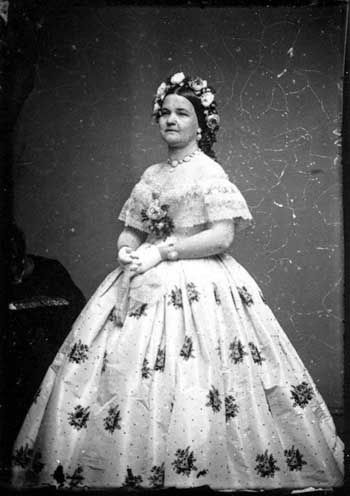
And here’s Burwell House from which Elizabeth Keckley bought her freedom:

It was a school for girls between 1835 – 1857.
Touching on the poignant side of life, here’s a grave stone from the Presbyterian Church:
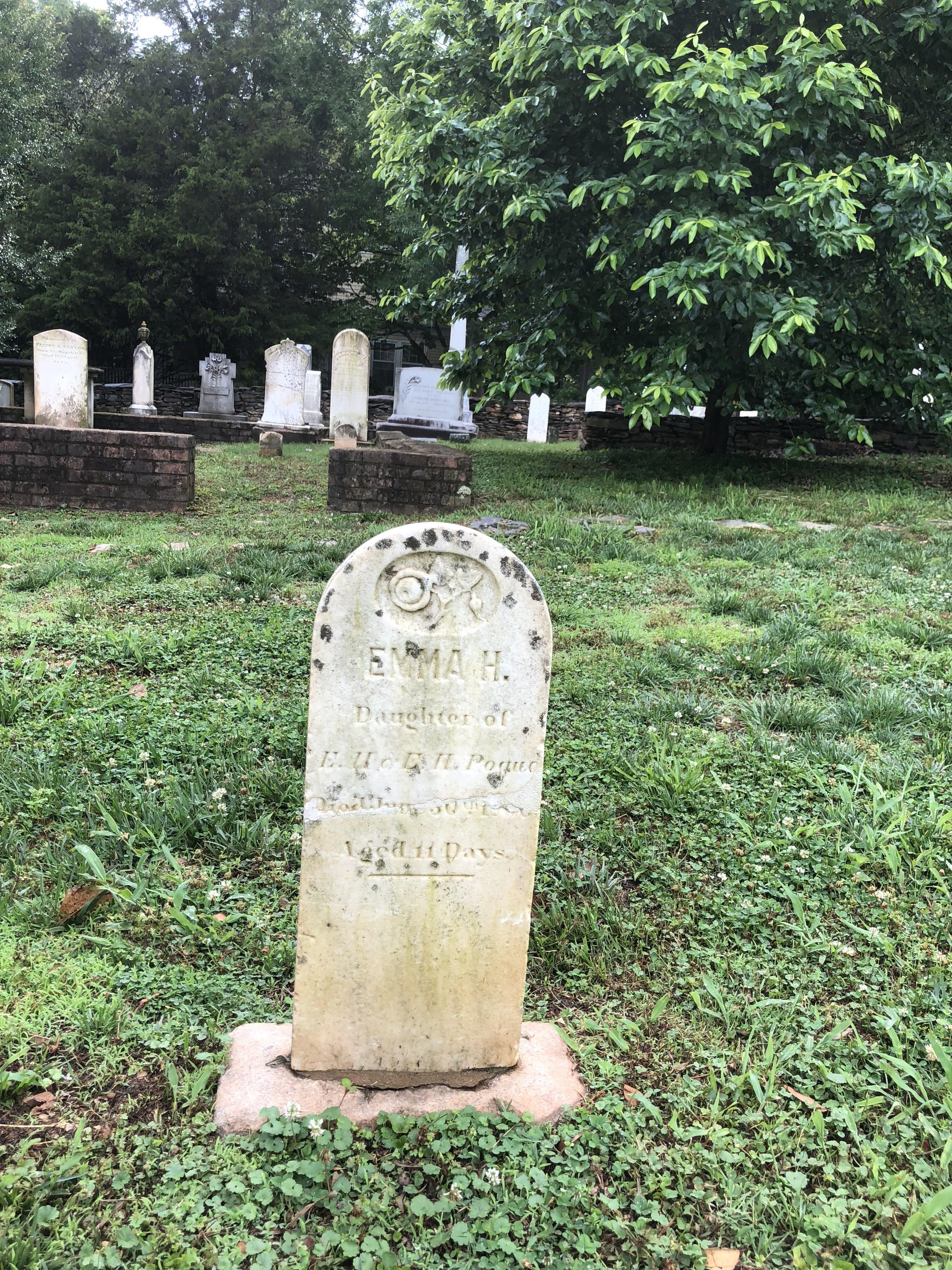
I can’t read the date when Emma H. died, but you can see clearly she was eleven days old.
Hillsborough is known for its houses:
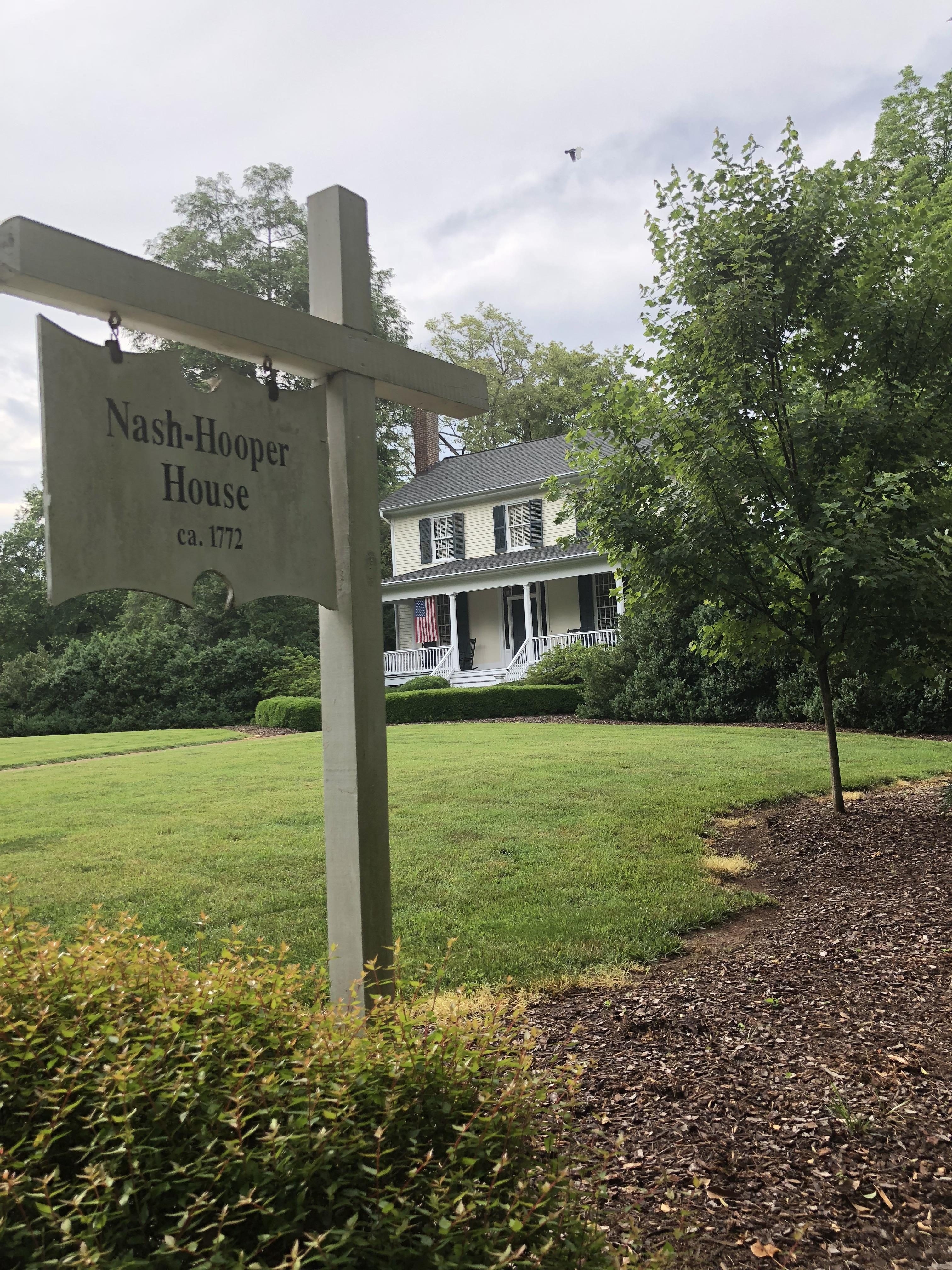
A real Colonial!
And then there’s the old Colonial Inn just begging for a renovation:

Next door to the dilapidated Inn there’s this:

Here’s a little cutie that sits right behind the Old Orange County Courthouse in the center of town:
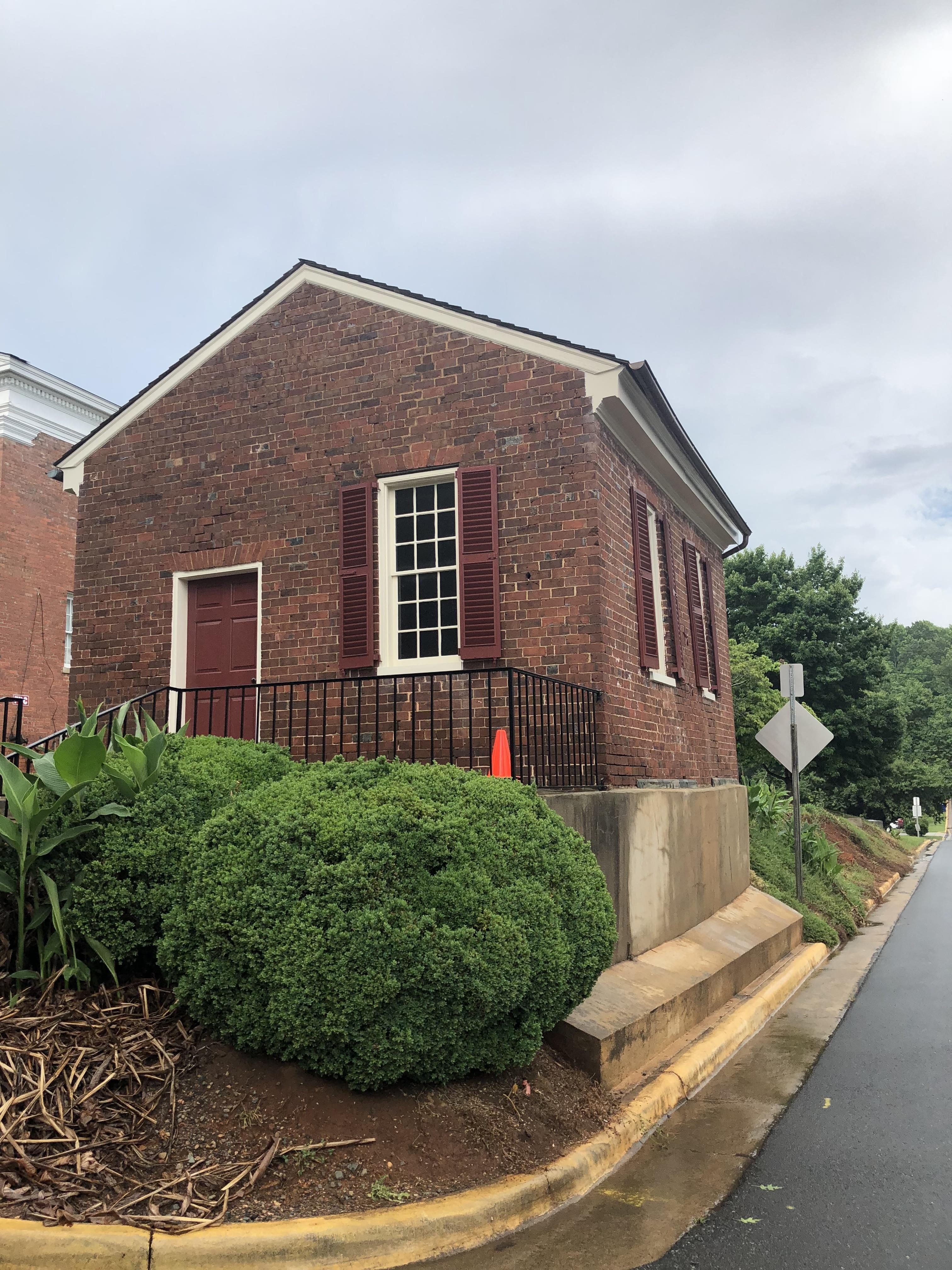
It looks to be one room, two at most.
Across the street from the cutie and behind the old courthouse is a square with this magnificent Southern Oak:

I haven’t been in North Carolina in the month of May for a very long time. What I was mostly struck by in my visit to Hillsborough was just how lush and green and wet and dripping everything is from all the showers.
Case in point: the 1840 Scott House, seen from the street, is mostly vegetation. I respected the Private Property sign and did not attempt to photograph the house closer up.

Of course everything is as lush and green in Durham, but it took my decision to be a tourist for me to see it all.
Hillsborough, NC: My Fiction
As I walked around Hillsborough I remembered the last time I did a walking tour of the town: when I was writing Carolina Sonnet. The story is set in Hillsborough in May, 1825 and, yes, I remember writing about the lush greenery at this time of year.

The plot does, indeed, revolve around a sonnet.
I looked for the house where my heroine, Cathy, lived. I thought I knew exactly where it was and walked all around but couldn’t find it. Finally I had to concede I imagined it. I’m amazed that, to this day, the house is clearly fixed in my imagination.
It looks something like this, a one-story with a big ol’ wrap-around porch:

Paint the house blue, give it red shutters and a short brick walkway to the road and a gated picket fence. Put a dog, a cat and a billy goat grazing in the yard. Then you’ll have Cathy’s house.
About the story: The day before it begins, crotchety old Hitchcock MacGuffin dies, but not before having sent 7 townspeople 2 lines each of an enigmatic sonnet. The recipients have to put their lines and heads together in order to solve the mystery he set for them.
The character Hitchcock MacGuffin never appears in the story, although he is the prime mover of it.
Why the name? I was clearly thinking of Alfred Hitchcock who used the term ‘MacGuffin’ to refer to an object that serves to move the plot forward. In the Maltese Falcon, for instance, the statue known as the Maltese Falcon was the thing that fueled the plot – and ended up being worthless.
Watch: What’s a MacGuffin in Films and Why is it Called That
To find out whether old Hitchcock MacGuffin’s sonnet leads to anything of value, read Carolina Sonnet
Categorised in: Adventure, North America, North Carolina
This post was written by Julie Tetel Andresen
You may also like these stories:
- google+
- comment
